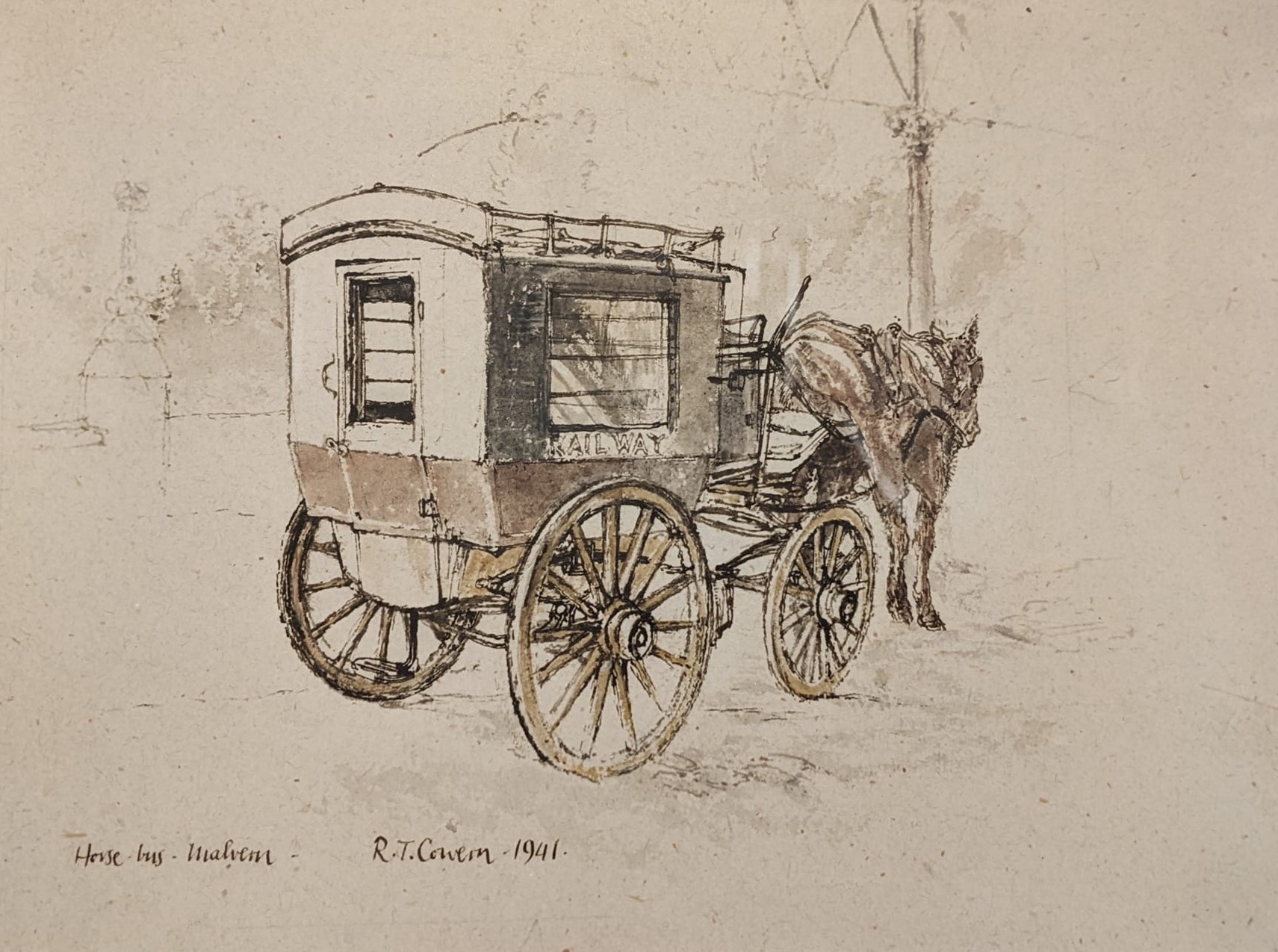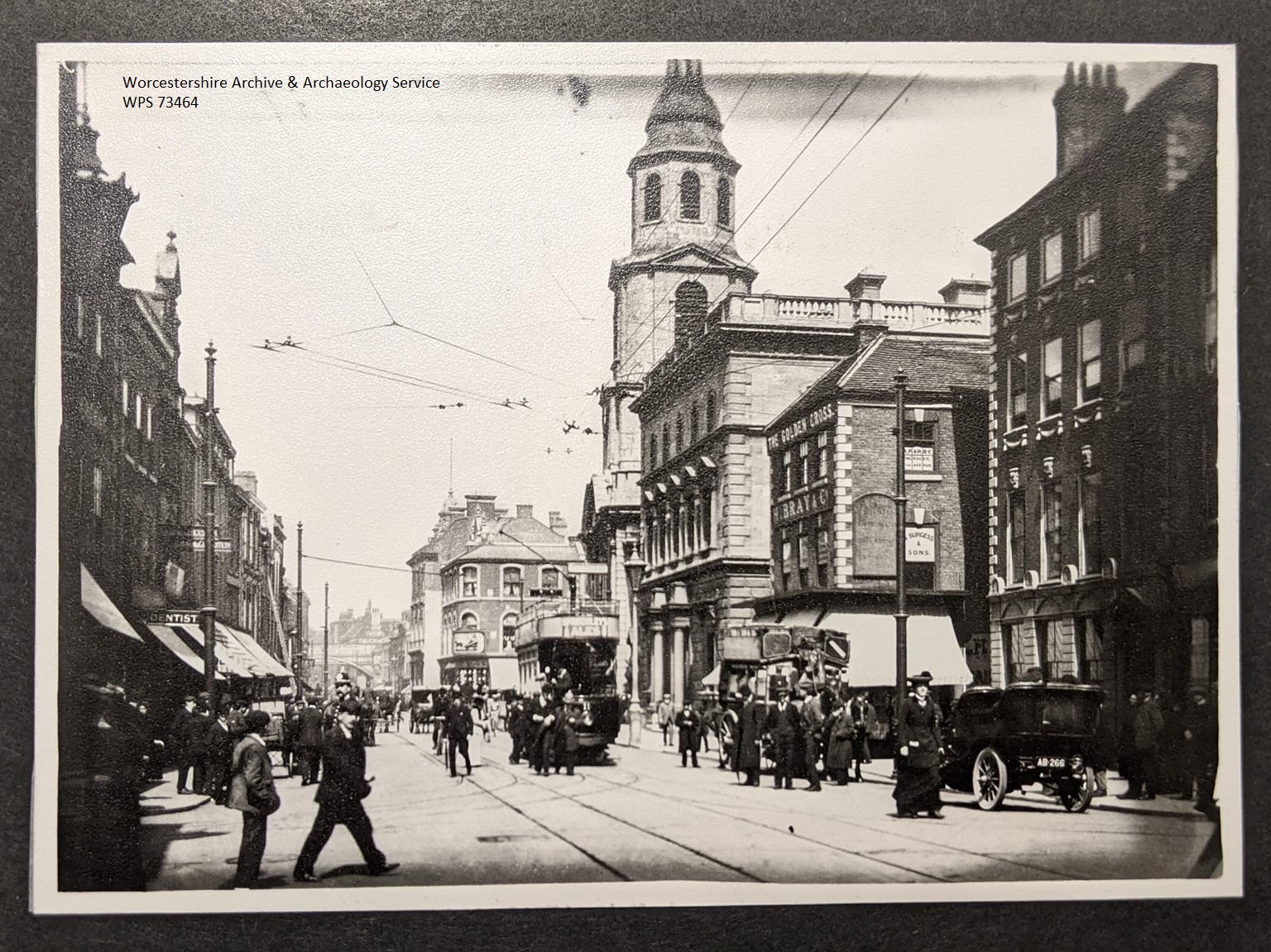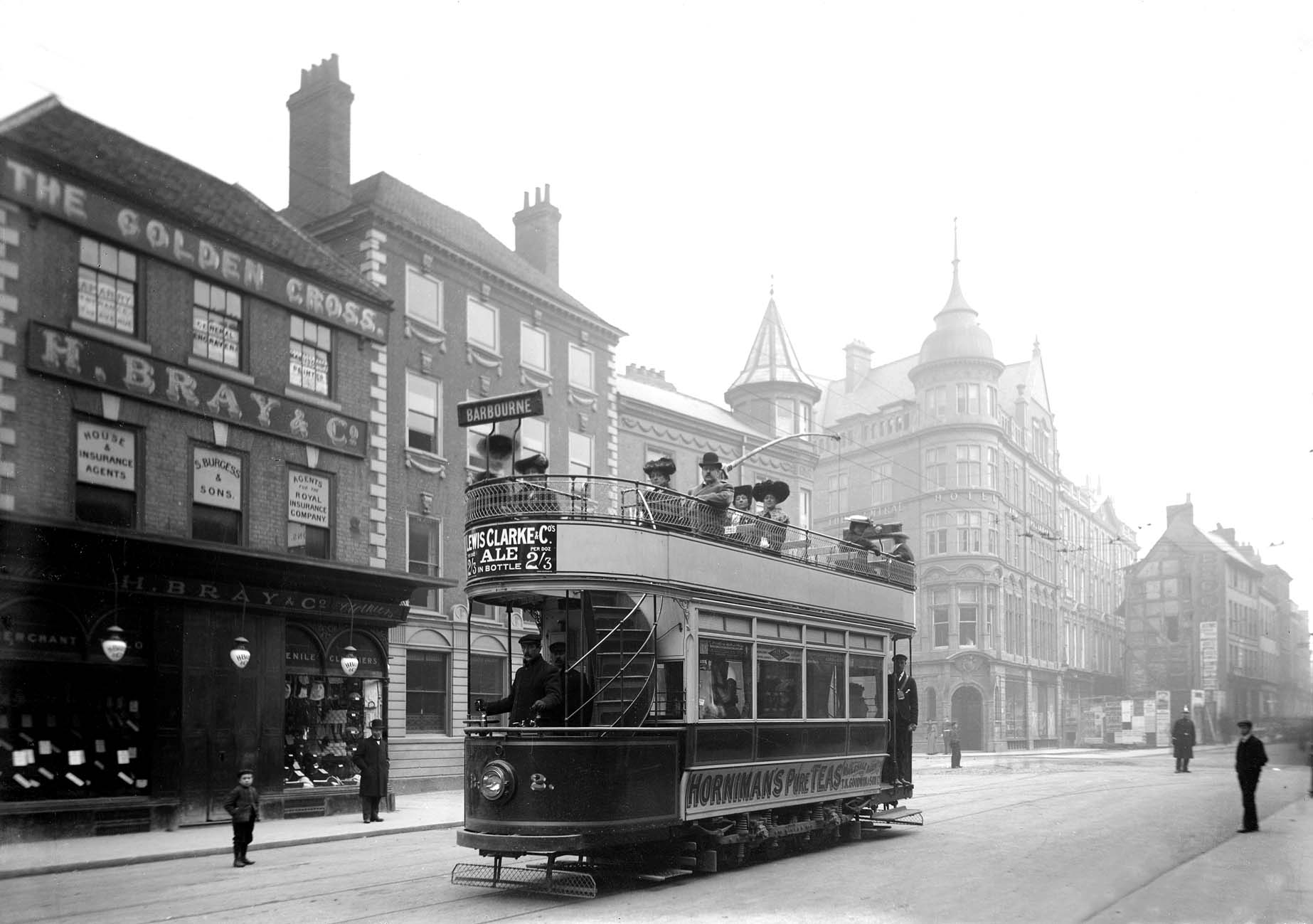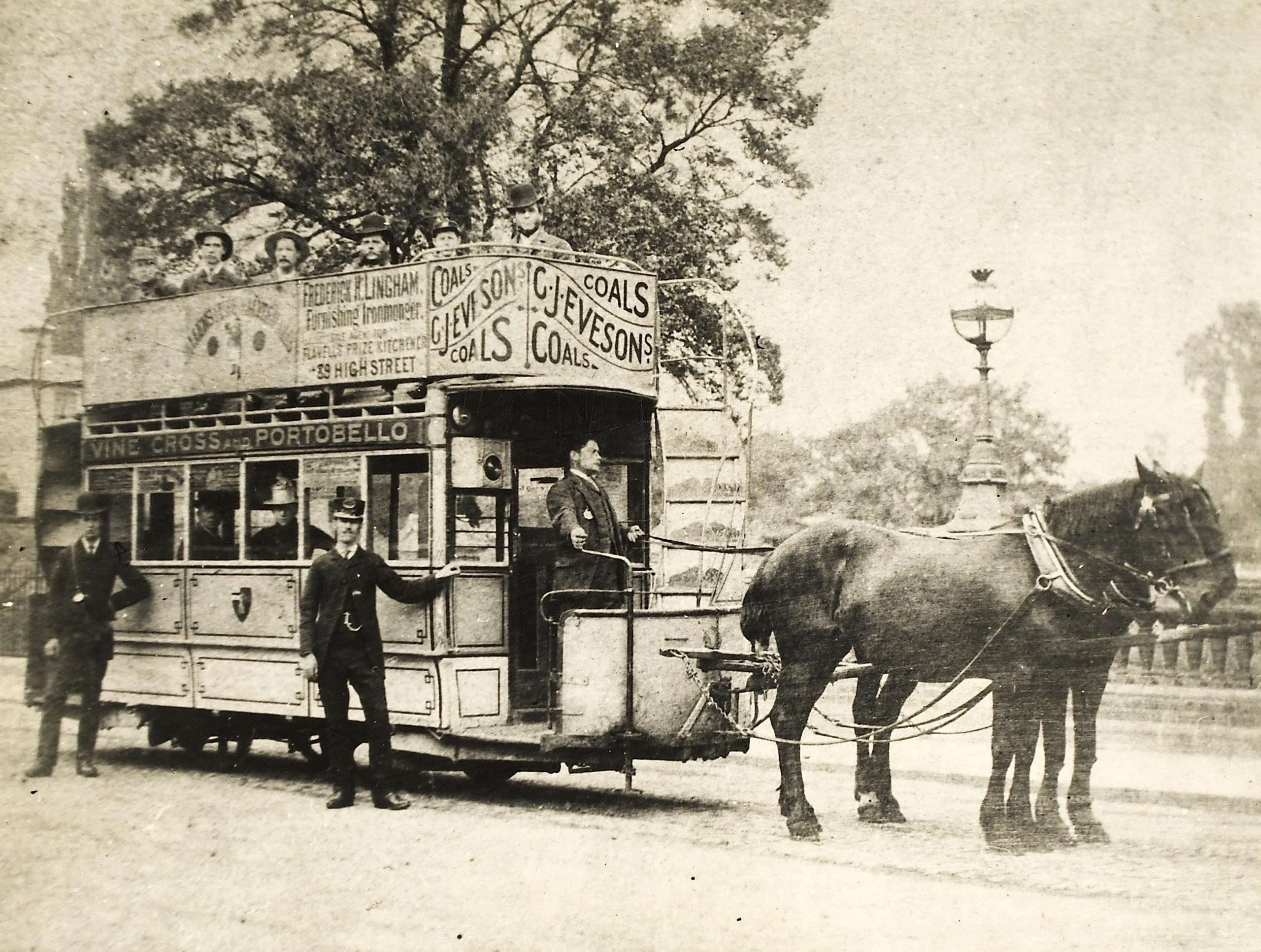Horse Buses in Old Worcester
- 19th January 2022
A newspaper transcription recalling horse buses was among items being catalogued in our Library Pamphlets (which came from Worcestershire History Centre before the service moved to The Hive in 2012). It refers to a Mr. Harry Birchley of London Road who was an old cabby of 90+ years who remembered very well cab-stands and horse drinking troughs situated around the city of Worcester for horse-buses. A horse-bus or horse-drawn omnibus was a large, enclosed, and sprung horse-drawn vehicle used for passenger transport used in the late 19th century in both the United States and Europe as the most common means of transportation in cities. It intrigued us so thought we’d have a longer look.

Horse Bus, Malvern – Photo of Watercolour by R.T. Cowern, 1941, WPS Ref: 61898, Recording Britain Collection © Pilgrim Trust 1989
Typically, two wooden benches along the sides of the passenger cabin held several sitting passengers facing each other. The driver sat on a separate, front-facing bench in an elevated position outside the passengers’ enclosed cabin. In the main age of horse-buses, many of them were double-decker buses. On the upper deck, which was uncovered, the longitudinal benches were arranged back to back.

Worcester City showing three forms of transport which include a tram and horse-bus WPS Ref: 73464, Photo taken at The Cross, 1906
The article went on to say ‘How many other readers remember stands at the Cathedral at All Saints, The Cross, Foregate Station, Shaw Street, Shirehall, Castle Street, St. Oswald’s, White Ladies, Barbourne Brewery, and Shrub Hill Station?’ Having looked through our Worcester Photographic survey, we have several photos of horse-buses, the above pictured at The Cross, alongside other forms of transport, including trams.

Electric tram by The Cross
At around 1890, electric propulsion became practical and began to replace both the horse and the cable and the number of traction lines on rails expanded exponentially. These became known as streetcars, trams, or trolleys and still exist in many cities today. Trams in Worcester however sadly had more of a chequered history, opening on 6th February 1904 and lasting only until May, 1928. Electric trams were cost effective due to the city, like many others, having its own Power Station.
Mr Birchley explained that ‘Horse-buses plied between Shrub Hill Station and the Bell Hotel, Broad Street, the Unicorn Hotel, Broad Street the Crown Hotel, the Star Hotel and the Hopmarket.’
‘As for the water-troughs, they were at the Bull Ring, St. John’s, Henwick, and Croft roads, the Tything, the New road, Lowesmoor, Bath Road (near Albion) and at London Road, opposite the Sebright Arms. All have disappeared.’
Mr Birchley’s reminiscence taken from a local Newspaper cutting (unknown source and date)

Horse-drawn tram. St John’s Worcester, 1889. Notice the sign on the side advertising that it goes from The Cross in the centre of Worcester to The Portobello in St John’s.
The picture of the tram opposite The Golden Cross is actually on the Cross. Ornate building was Cadena cafe for many years during the 1900s. Picture taken prior to widening of High Street and building on right was demolished. About 1904.
Yes, well spotted. Original photo mislocated and details copied across, but as you say it’s The Cross with Cadena Cafe in background.
The drawing of the horse bus in Malvern is a representation of the horse carriage (or station bus) driven by Mr Archibald Reynolds who was the last horse carriage driver in Malvern. He began his career aged 17 at Malvern Link Station and died in 1943 age 77, two years after retiring. I have a copy of a photograph of Mr Reynolds with the carriage used in your illustration.
Ref your comment on Worcester Trams ceasing service in 1920’s. I received a report over twenty years ago that Tram Lines were apparently taken up from Foregate Street bearing manufacturing details of late 1930’s German origin and taken for storage at Mr Bennet’s farm at Powick.
Undertaking research of my family tree I have found a death registration in Worcester for 2nd August 1853 that gives cause of death as “Run over by omnibus – verdict accidental death”. So, horse buses present in Worcester earlier than “late 19th century”? Sadly, the deceased, Alfred Thomas, was only 13 years old and working as a railway clerk. If anyone has access to old Worcester newspapers and can provide more details then I’d be grateful.
That is interesting, thank you for sharing. We have microfilmed copies of the Berrows Journal, going as far back as the 18th century, available to view in our self-Service area on level 2 of The Hive. This area is open from 8.30 to 22.00 daily.